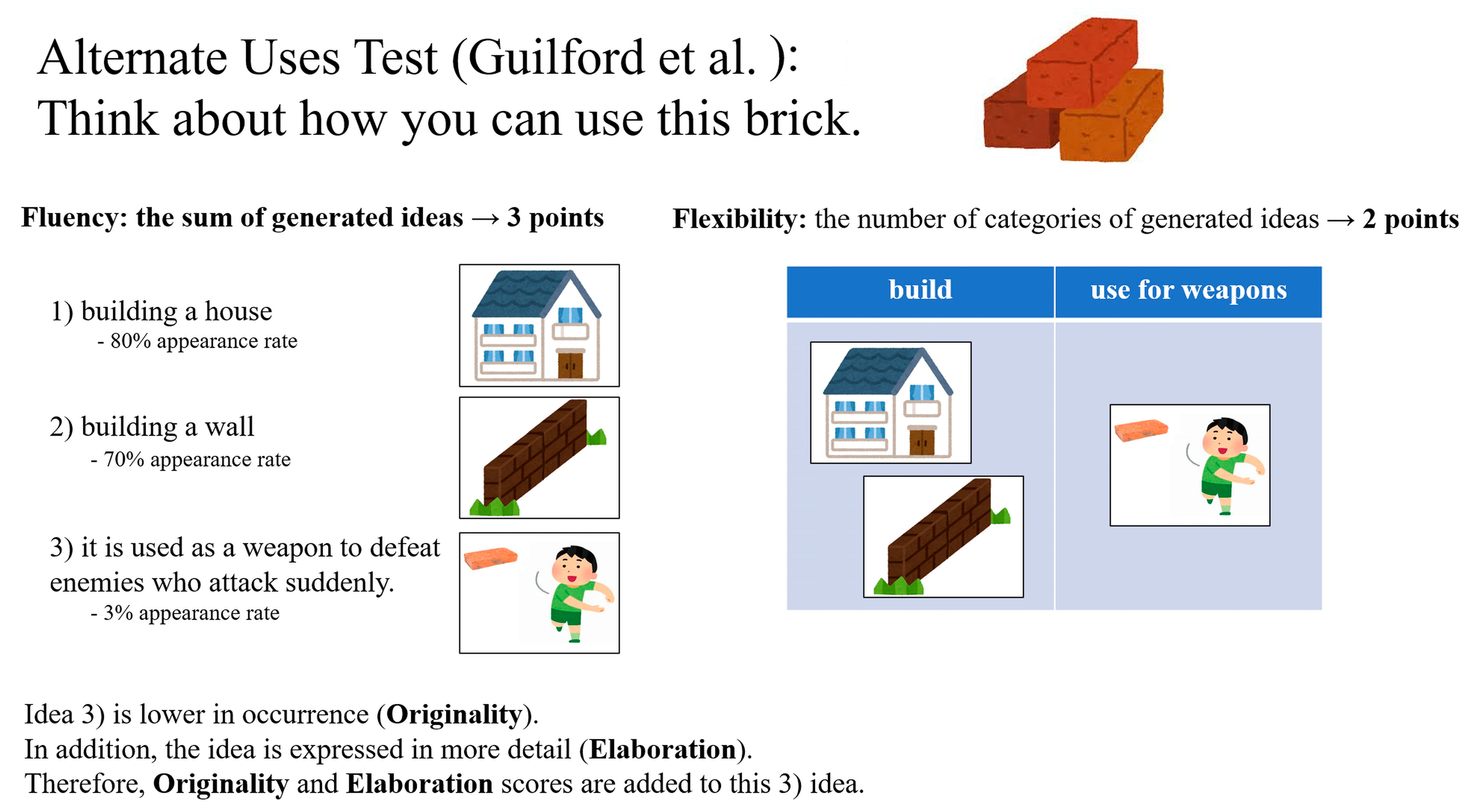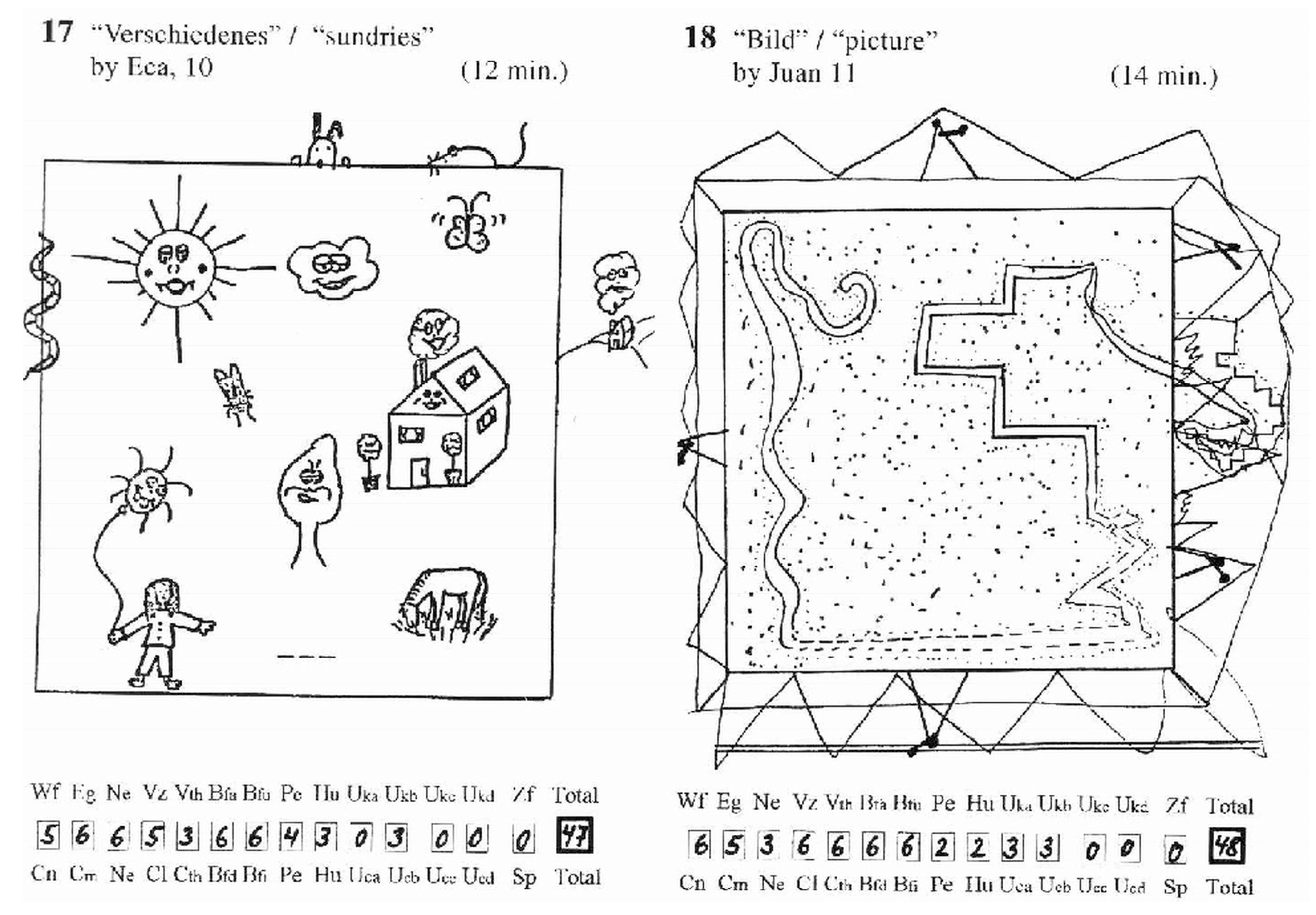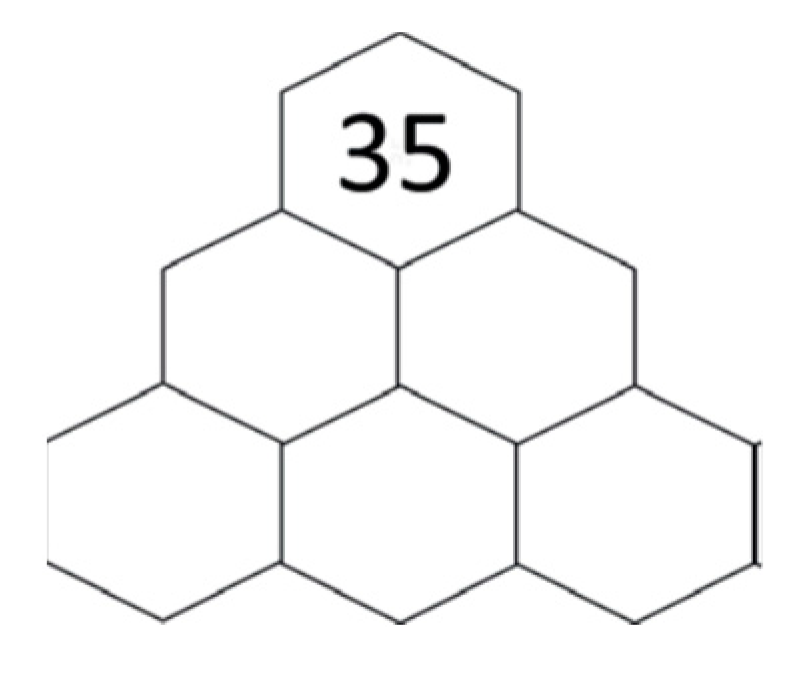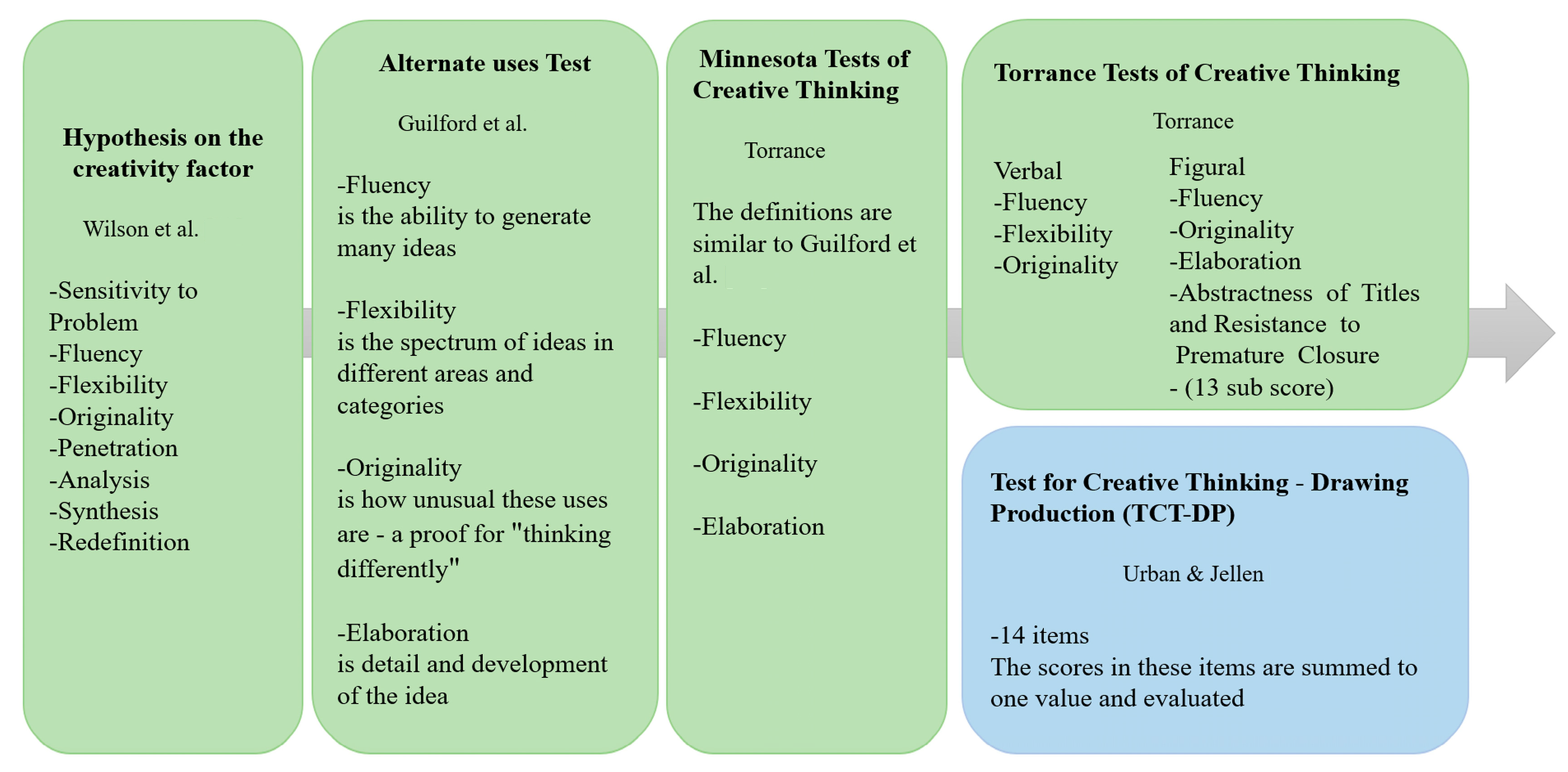Analysis of the Relationship between Creativity in Fermi Problems Measured by Applying Information Theory, Creativity in Psychology, and Mathematical Creativity
Abstract
:1. Introduction
2. Literature Review
2.1. Creativity in Psychology
2.2. Mathematical Creativity
2.3. Fermi Problems
2.4. Information Theory
=0.32… + 0.51… + 2.32…
≈3.14
3. Research Questions
4. Methodology
4.1. Participants
4.2. Implement
4.2.1. Test for Creative Thinking-Drawing Production (TCT-DP)
4.2.2. Mathematical Creativity Test
- Mathematical Creativity Test 1 [42]:
- Mathematical Creativity Test 2 [9]:
- Mathematical Creativity Test 3 [54]:
4.2.3. Fermi Problems Test
- Fermi problem 1: How many liters of water does one person use in a year?
- Fermi problem 2: If you collected all the smartphones in the world, how many would there be?
- Fermi problem 3: If you collected all the cars in your country, how many would there be? Think of as many ways as you can to find out how many cars there are. Write down as many ways as you can to find out how many cars there are, and write them down in as much detail as you can, using sentences, formulas, and diagrams. You do not have to calculate how many cars there are in your country.
4.3. Procedure of Survey
4.4. Hypothesis Model for the Analysis
5. Results
6. Discussion
Author Contributions
Funding
Institutional Review Board Statement
Informed Consent Statement
Data Availability Statement
Conflicts of Interest
References
- Runco, M.A. Creativity: Theories and Themes: Research, Development, and Practice; Elsevier Academic Press: Burlington, MA, USA; London, UK, 2007. [Google Scholar]
- Picciuto, E.; Carruthers, P. The Origins of Creativity. Philos. Creat. 2014, 199, 199–223. [Google Scholar] [CrossRef] [Green Version]
- Rhodes, M. An Analysis of Creativity. Phi Delta Kappan 1961, 42, 305–310. [Google Scholar]
- Shimizu, D. Introduction of Review Articles about Approaches and Measurements in Studying Creativity. Cogn. Stud. 2019, 26, 283–290. [Google Scholar] [CrossRef]
- Piirto, J. Creativity for 21st Century Skills; SensePublishers: Rotterdam, The Netherlands, 2011; pp. 1–12. [Google Scholar] [CrossRef]
- Publications Office of the European Union. Key Competences for Lifelong Learning. Available online: https://op.europa.eu/en/publication-detail/-/publication/297a33c8-a1f3-11e9-9d01-01aa75ed71a1/language-en (accessed on 15 December 2022).
- Sriraman, B. The Characteristics of Mathematical Creativity. Math. Educ. 2004, 14, 19–34. [Google Scholar] [CrossRef] [Green Version]
- Lu, X.; Kaiser, G. Creativity in Students’ Modelling Competencies: Conceptualisation and Measurement. Educ. Stud. Math. 2022, 109, 287–311. [Google Scholar] [CrossRef]
- Kattou, M.; Kontoyianni, K.; Pitta-Pantazi, D.; Christou, C. Connecting Mathematical Creativity to Mathematical Ability. ZDM 2013, 45, 167–181. [Google Scholar] [CrossRef]
- Silver, E.A. Fostering Creativity through Instruction Rich in Mathematical Problem Solving and Problem Posing. ZDM 1997, 29, 75–80. [Google Scholar] [CrossRef]
- Thohari, C.A.F.; Budiyono; Pratiwi, H. Students’ Creativity Level on Solving Mathematics Problem. J. Phys. Conf. Ser. 2020, 1613, 012051. [Google Scholar] [CrossRef]
- Chamberlin, S.A.; Moon, S.M. Model-Eliciting Activities as a Tool to Develop and Identify Creatively Gifted Mathematicians. J. Second. Gift. Educ. 2005, 17, 37–47. [Google Scholar] [CrossRef]
- Shriki, A. Working like Real Mathematicians: Developing Prospective Teachers’ Awareness of Mathematical Creativity through Generating New Concepts. Educ. Stud. Math. 2010, 73, 159–179. [Google Scholar] [CrossRef]
- Shriki, A. A Model for Assessing the Development of Students’ Creativity in the Context of Problem Posing. Creat. Educ. 2013, 4, 430–439. [Google Scholar] [CrossRef] [Green Version]
- Kim, K.H. Can We Trust Creativity Tests? A Review of the Torrance Tests of Creative Thinking (TTCT). Creat. Res. J. 2006, 18, 3–14. [Google Scholar] [CrossRef]
- Pitta-Pantazi, D.; Kattou, M.; Christou, C. Mathematical Creativity: Product, Person, Process and Press. In Mathematical Creativity and Mathematical Giftedness: Enhancing Creative Capacities in Mathematically Promising Students; Singer, F.M., Ed.; Springer International Publishing: Cham, Switzerland, 2018; pp. 27–53. [Google Scholar] [CrossRef]
- Okamoto, H. Analysis of the Model Relating Creativity in Fermi Problems and General Creativity in Psychology and Mathematical Creativity. Int. J. Educ. Res. 2022, 10, 8. [Google Scholar]
- Morrison, P. Fermi Questions. Am. J. Phys. 1963, 31, 626–627. [Google Scholar] [CrossRef]
- Carlson, J.E. Fermi Problems on Gasoline Consumption. Phys. Teach. 1997, 35, 308–309. [Google Scholar] [CrossRef]
- Ärlebäck, J.B. On the use of realistic Fermi problems for introducing mathematical modelling in school. Math. Enthus. 2009, 6, 331–364. [Google Scholar] [CrossRef]
- Ärlebäck, J.B.; Albarracín, L. The Use and Potential of Fermi Problems in the STEM Disciplines to Support the Development of Twenty-First Century Competencies. ZDM 2019, 51, 979–990. [Google Scholar] [CrossRef] [Green Version]
- Greefrath, G.; Frenken, L. Fermi Problems in Standardized Assessment in Grade 8. Quadrante 2021, 30, 52–73. [Google Scholar] [CrossRef]
- Baum, M.; Bellstedt, M.; Buck, H.; Dürr, R.; Freudigmann, H.; Haug, F.; Hußmann, S.; Jürgensen, T.; Leuders, T.; Richter, K.; et al. Lambacher Schweizer 5 Mathematik für Gymnasien; Ernst Klett Verlag GmbH: Stuttgart, Germany, 2007. [Google Scholar]
- Goel, P.S.; Singh, N. Creativity and Innovation in Durable Product Development. Comput. Ind. Eng. 1998, 35, 5–8. [Google Scholar] [CrossRef]
- Ärlebäck, J.B.; Bergsten, C. On the Use of Realistic Fermi Problems in Introducing Mathematical Modelling in Upper Secondary Mathematics. In Modeling Students’ Mathematical Modeling Competencies: ICTMA 13; Lesh, R., Galbraith, P.L., Haines, C.R., Hurford, A., Eds.; Springer: Dordrecht, The Netherlands, 2013; pp. 597–609. [Google Scholar] [CrossRef]
- Hartmann, M.; Borys, T.; Kawasaki, T.; Okamoto, H. Observing Creative Characteristics in Solving Fermi-Tasks by the Modelling and Creating Activity Diagram. In Proceedings of the 2019 International Joint Conference on Information, Media and Engineering, Osaka, Japan, 17–19 December 2019; pp. 97–100. [Google Scholar]
- Shannon, C.E. A Mathematical Theory of Communication. Bell Syst. Tech. J. 1948, 27, 379–423. [Google Scholar] [CrossRef] [Green Version]
- Weaver, W. Recent Contributions to the Mathematical Theory of Communication. 1949. Available online: http://waste.informatik.hu-berlin.de/Lehre/ss11/SE_Kybernetik/reader/weaver.pdf (accessed on 10 November 2022).
- Okamoto, H. Measuring Creativity in the Fermi Problem, a Type of Mathematical Modelling, Applying Information Theory. J. Educ. Technol. Dev. Exch. 2022, 15, 1. [Google Scholar] [CrossRef]
- Runco, M.A. Creativity: Theories and Themes: Research, Development, and Practice, 2nd ed.; Academic Press: San Diego, CA, USA, 2014. [Google Scholar]
- Treffinger, D.J. Creativity, Creative Thinking, and Critical Thinking: In Search of Definitions; Center for Creative Learning Inc.: Sarasota, FL, USA, 2011. [Google Scholar]
- Wilson, R.C.; Guilford, J.P.; Christensen, P.R.; Lewis, D.J. A Factor-Analytic Study of Creative-Thinking Abilities. Psychometrika 1954, 19, 297–311. [Google Scholar] [CrossRef]
- Guilford, J.P.; Christensen, P.R.; Merrifield, P.R.; Wilson, R.C. Alternate Uses: Manual of Instructions and Interpretation; Sheridan Psychological Services: Orange, CA, USA, 1960. [Google Scholar]
- Torrance, E.P. Administration and Scoring Manual for Abbreviated form Ⅶ Minnesota Tests of Creative Thinking; University of Minnesota: Minneapolis, MI, USA, 1963. [Google Scholar]
- Torrance, E.P. The Torrance Tests of Creative Thinking–Norms: Technical Manual Research Edition—Verbal Tests, Forms A and B—Figural Tests, Forms A and B; Personnel Press: Princeton, NJ, USA, 1966. [Google Scholar]
- Urban, K.K.; Jellen, H.G. Test for Creative Thinking—Drawing Production; Swets Test Services: Frankfurt, Germany, 1996. [Google Scholar]
- Vartanian, O.; Smith, I.; Lam, T.K.; King, K.; Lam, Q.; Beatty, E.L. The Relationship between Methods of Scoring the Alternate Uses Task and the Neural Correlates of Divergent Thinking: Evidence from Voxel-Based Morphometry. NeuroImage 2020, 223, 117325. [Google Scholar] [CrossRef] [PubMed]
- Kratzmeier, H. Heidelberger Intelligenztest. HIT 1–2; Beltz: Weinheim, Germany, 1977. [Google Scholar]
- Urban, K.K. Assessing creativity: The test for creative thinking-drawing production (TCT-DP) the concept, application, evaluation, and international studies. Psychol. Sci. 2004, 46, 387–397. [Google Scholar]
- Urban, K.K.; Jellen, H.G. Test for Creative Thinking—Drawing Production, 2nd ed.; Pearson Assessment & Information GmbH: Frankfurt, Germany, 2010. [Google Scholar]
- Hébert, T.P.; Cramond, B.; Spiers Neumeister, K.L.; Millar, G.; Silvian, A.F.E. Paul Torrance: His Life, Accomplishments, and Legacy; University of Connecticut: Storrs, CT, USA, 2002. [Google Scholar]
- Mann, E.L. Mathematical Creativity and School Mathematics: Indicators of Mathematical Creativity in Middle School Students. Ph.D. Thesis, University of Connecticut, Storrs, CT, USA, 2005. [Google Scholar]
- Nadjafikhah, M.; Yaftian, N.; Bakhshalizadeh, S. Mathematical Creativity: Some Definitions and Characteristics. Procedia-Soc. Behav. Sci. 2012, 31, 285–291. [Google Scholar] [CrossRef] [Green Version]
- Balka, D.S. Using Research in Teaching: Creative Ability in Mathematics. Arith. Teach. 1974, 21, 633–636. [Google Scholar] [CrossRef]
- Kattou, M.; Christou, C.; Pitta-Pantazi, D. Mathematical creativity or general creativity? In Proceedings of the 9th Congress of European Research in Mathematics Education, Prague, Czech Republic, 4–8 February 2015; Krainer, K., Vondrová, N., Eds.; Charles University in Prague: Prague, Czech Republic, 2015; pp. 1016–1023. [Google Scholar]
- Peter-Koop, A. Fermi problems in primary mathematics classrooms: Pupils’ Interactive modelling processes. In Proceedings of the 27th annual conference of the Mathematics Education Research Group of Australasia (MERGA), Townsville, Sydney, 27–30 June 2004; Putt, I., Faragher, R., McLean, M., Mathematics Education Research Group of Australasia, Eds.; Melbourne University: Melbourne, Australia, 2004; pp. 454–461. [Google Scholar]
- Ärlebäck, J.B.; Albarracín, L. Developing a Classification Scheme of Definitions of Fermi Problems in Education from a Modelling Perspective. In Proceedings of the Tenth Congress of European Research in Mathematics Education, Dublin, Ireland, 1–5 February 2017; Dooley, T., Gueudet., G., Eds.; DCU Institute of Education and ERME: Dublin, Ireland, 2017; pp. 884–891. [Google Scholar]
- Albarracín, L.; Gorgorió, N. Devising a Plan to Solve Fermi Problems Involving Large Numbers. Educ. Stud. Math. 2014, 86, 79–96. [Google Scholar] [CrossRef]
- Helps, C.R.; Lunt, B. Problem Solving in Engineering: Creativity, Estimation and Critical Thinking are Essential Skills. In Proceedings of the 2001 Annual Conference Proceedings, Albuquerque, New Mexico, 24–27 June 2001; ASEE Conferences: Albuquerque, NM, USA, 2001; pp. 6.808.1–6.808.8. [Google Scholar] [CrossRef]
- Ferrando, I.; Segura, C. Fomento de La Flexibilidad Matemática a Través de Una Secuencia de Tareas de Modelización. Av. De Investig. En Educ. Matemática 2020, 17, 84–97. [Google Scholar] [CrossRef]
- Jones, D.S. Elementary Information Theory; Oxford University Press: New York, NY, USA, 1979. [Google Scholar]
- Snyder, A.; Mitchell, J.; Bossomaier, T.; Pallier, G. The Creativity Quotient: An Objective Scoring of Ideational Fluency. Creat. Res. J. 2004, 16, 415–419. [Google Scholar] [CrossRef]
- Sloper, D.S. A-Priori Sample Size Calculator for Structural Equation Models. Available online: http://www.danielsoper.com/statcalc (accessed on 10 November 2022).
- Pitta-Pantazi, D.; Sophocleous, P.; Christou, C. Spatial Visualizers, Object Visualizers and Verbalizers: Their Mathematical Creative Abilities. ZDM 2013, 45, 199–213. [Google Scholar] [CrossRef]
- Schoevers, E.M.; Kroesbergen, E.H.; Kattou, M. Mathematical Creativity: A Combination of Domain-General Creative and Domain-Specific Mathematical Skills. J. Creat. Behav. 2020, 54, 242–252. [Google Scholar] [CrossRef] [Green Version]
- Shi, D.; Lee, T.; Maydeu-Olivares, A. Understanding the Model Size Effect on SEM Fit Indices. Educ. Psychol. Meas. 2019, 79, 310–334. [Google Scholar] [CrossRef] [PubMed] [Green Version]
- West, R.F.; Meserve, R.J.; Stanovich, K.E. Cognitive Sophistication Does Not Attenuate the Bias Blind Spot. J. Personal. Soc. Psychol. 2012, 103, 506–519. [Google Scholar] [CrossRef] [PubMed] [Green Version]
- MacCallum, R.C.; Browne, M.W.; Sugawara, H.M. Power Analysis and Determination of Sample Size for Covariance Structure Modeling. Psychol. Methods 1996, 1, 130–149. [Google Scholar] [CrossRef]
- Hu, L.; Bentler, P.M. Cutoff Criteria for Fit Indexes in Covariance Structure Analysis: Conventional Criteria versus New Alternatives. Struct. Equ. Model. A Multidiscip. J. 1999, 6, 1–55. [Google Scholar] [CrossRef]
- Döring, N.; Bortz, J. Forschungsmethoden und Evaluation in Den Sozial- und Humanwissenschaften; Springer: Berlin/Heidelberg, Germany, 2016. [Google Scholar] [CrossRef]
- Segura, C.; Ferrando, I. Classification and Analysis of Pre-Service Teachers’ Errors in Solving Fermi Problems. Educ. Sci. 2021, 11, 451. [Google Scholar] [CrossRef]








| Country, Area | Range of Ages | The Number of Participants | |
|---|---|---|---|
| School A | Japan, Gifu | 12–14 | N = 149 |
| School B | Japan, Gifu | 13–14 | N = 223 |
| School C | Germany, Baden-Württemberg | 12–13 | N = 45 |
| School D | Germany, Baden-Württemberg | 13–14 | N = 40 |
| Index | Hypothetical Models 1, 2, and 3 |
|---|---|
| p | 0.00 |
| χ2 | 189.36 |
| df | 62.00 |
| CFI | 0.97 |
| RMSEA | 0.06 |
| SRMR | 0.05 |
Disclaimer/Publisher’s Note: The statements, opinions and data contained in all publications are solely those of the individual author(s) and contributor(s) and not of MDPI and/or the editor(s). MDPI and/or the editor(s) disclaim responsibility for any injury to people or property resulting from any ideas, methods, instructions or products referred to in the content. |
© 2023 by the authors. Licensee MDPI, Basel, Switzerland. This article is an open access article distributed under the terms and conditions of the Creative Commons Attribution (CC BY) license (https://creativecommons.org/licenses/by/4.0/).
Share and Cite
Okamoto, H.; Hartmann, M.; Kawasaki, T. Analysis of the Relationship between Creativity in Fermi Problems Measured by Applying Information Theory, Creativity in Psychology, and Mathematical Creativity. Educ. Sci. 2023, 13, 315. https://doi.org/10.3390/educsci13030315
Okamoto H, Hartmann M, Kawasaki T. Analysis of the Relationship between Creativity in Fermi Problems Measured by Applying Information Theory, Creativity in Psychology, and Mathematical Creativity. Education Sciences. 2023; 13(3):315. https://doi.org/10.3390/educsci13030315
Chicago/Turabian StyleOkamoto, Hidemichi, Mutfried Hartmann, and Tetsushi Kawasaki. 2023. "Analysis of the Relationship between Creativity in Fermi Problems Measured by Applying Information Theory, Creativity in Psychology, and Mathematical Creativity" Education Sciences 13, no. 3: 315. https://doi.org/10.3390/educsci13030315
APA StyleOkamoto, H., Hartmann, M., & Kawasaki, T. (2023). Analysis of the Relationship between Creativity in Fermi Problems Measured by Applying Information Theory, Creativity in Psychology, and Mathematical Creativity. Education Sciences, 13(3), 315. https://doi.org/10.3390/educsci13030315









